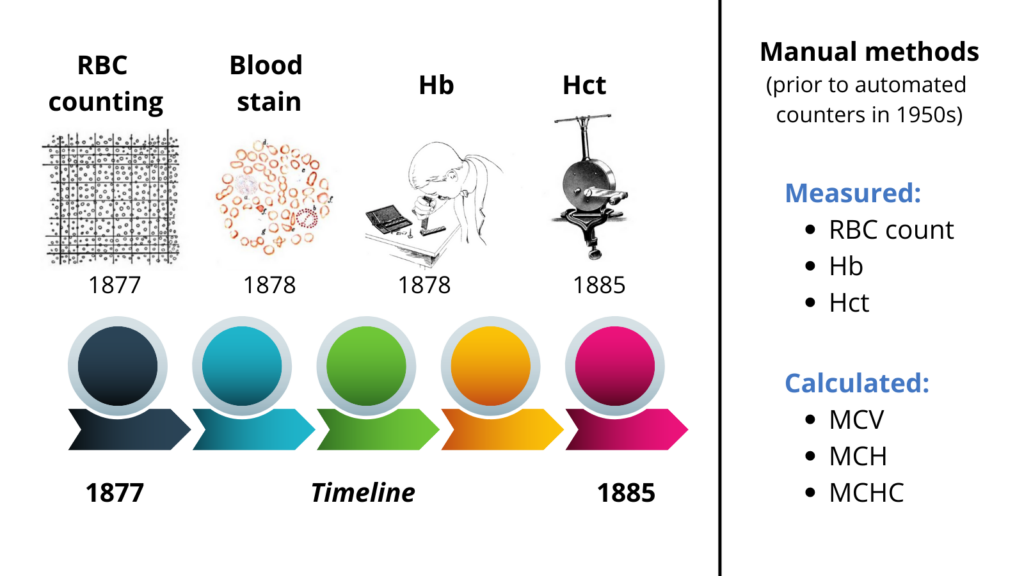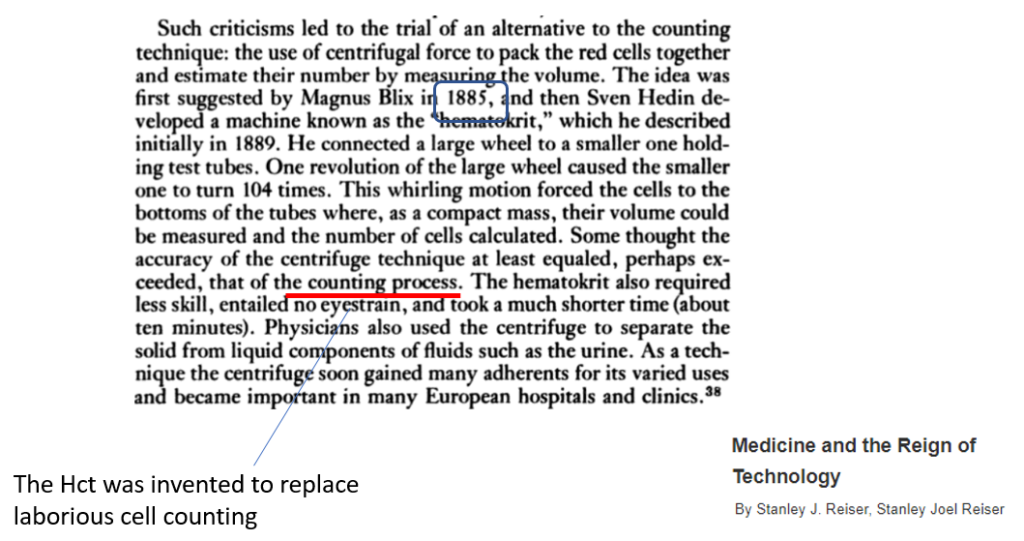Postscript

Initially, the Hct was designed to provide a more rapid test for RBC count (which was much more time-consuming):



Now let’s return to the manual method of centrifuging blood. You can only imagine the challenge of counting off the number of revolutions per minute all the while keeping close track of time. At the turn of the 20th century, house officers, not lab technicians were responsible for performing their own Hct measurements. Around this time, we begin to see mention of electric versions of the centrifuge:


Once it was realized that the Hct is not an acceptable surrogate for the red blood cell count (since it depended on the MCV), the Hct was adopted as a useful as a way to measure RBC volume (Hct/RBC count). Only later – well into the 20th century – was the Hct used as a surrogate for red cell mass and hemoglobin.

